 Spatial Reasoning Test Practice Test with Questions, Answers, and Explanations
Spatial Reasoning Test Practice Test with Questions, Answers, and Explanations
The questions on this free Spatial Reasoning Test practice test are a true representation of the questions you'll face on the actual Spatial Reasoning Test Aptitude Test.
These Spatial Reasoning Test sample questions were specifically chosen from our full Spatial Reasoning Test practice pack to help improve your score and ace your pre-employment process.
Free Spatial Reasoning Test Practice Questions
Check out our Free Aptitude, Abstract Reasoning, Verbal Reasoning, Numerical Reasoning and Critical Thinking Tests.
Sample Question #1
When put together properly, the top three puzzle pieces will create one of the following shapes (A-E).
Note that a side marked X has to touch X and a side marked Y has to touch Y.
Choose the correct answer.
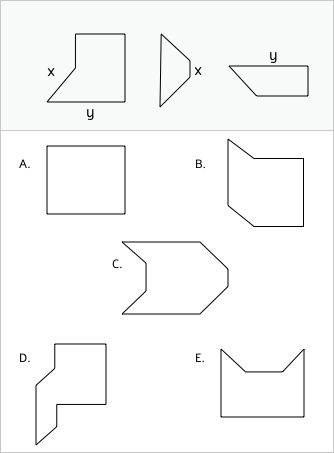
The correct answer is (B)
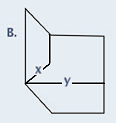
Sample Question #2
Which of the four possible options represents the cube in its folded form?
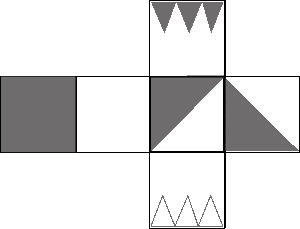
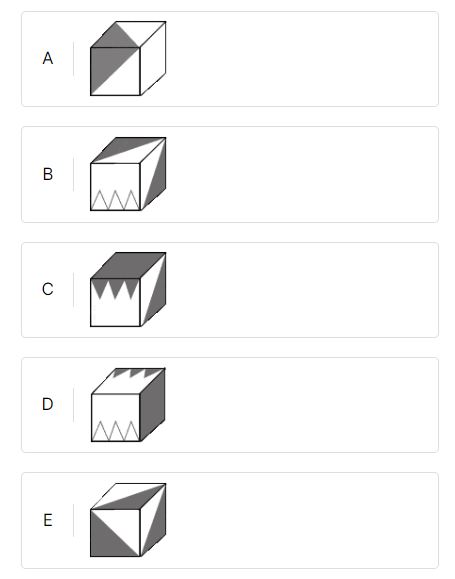
The correct answer is (C).
Option C – When folding the cube using your imagination, the grey facet, and the facet with the grey triangles are situated in relation to each other as they appear in this option.
This means the facet on the right should consist of a grey triangle that colours the lower right hand side of the facet – as it appears in this option.
Option D – the facets with the small triangles (grey and white) are situated on the cube's opposing sides.
Option A – the two facets with the grey triangle in them are not situated in relation to each other as they appear in option A.
Option B – the two facets with the grey triangle in them are not situated in relation to each other as they appear in option B.
Option E - There appear three grey triangles instead of two.
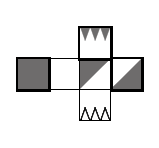
Understanding Patterns
The purpose of these questions is to measure the ability to convert two-dimensional shapes into three-dimensional shapes and vice versa. Take a full-length Spatial Reasoning practice test that mimics the actual exam. Other preparations which include Spatial Reasoning practice tests: CAT4, Psychometric, Engineering, and Mechanical.
Sample Question #3
When put together properly, the top three puzzle pieces will create one of the following shapes (A-E).
Note that a side marked X has to touch X and a side marked Y has to touch Y.
Choose the correct answer.
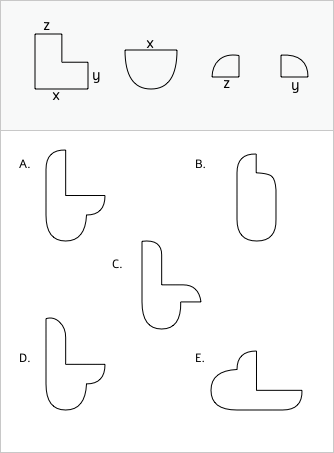
The correct answer is (A).
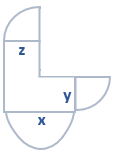
Sample Question #4
When put together properly, the top three puzzle pieces will create one of the following shapes (1-5).
Note that a side marked A has to touch A and so forth.
Choose the correct answer.
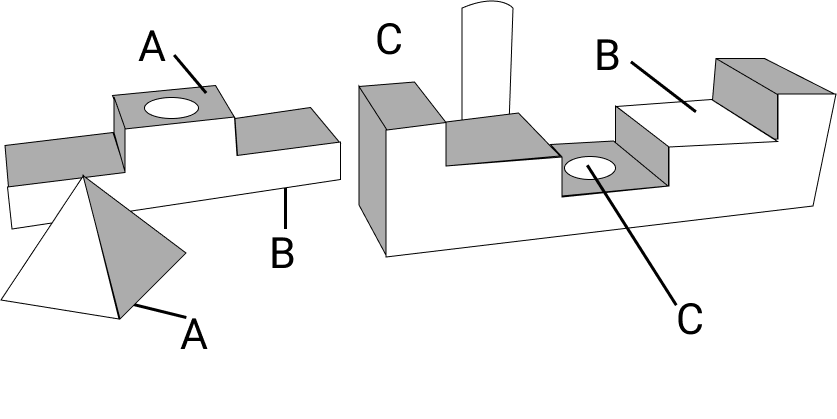
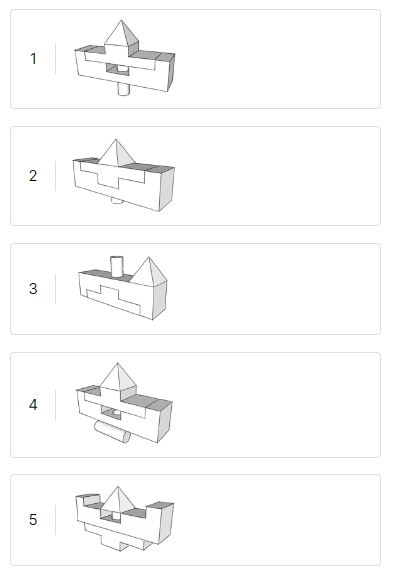
The correct answer is (A).
The correct answer is picture #1. Look at the ends marked A. If these two ends are put together, what would the resulting shape look like? Of the five pictures, only pictures 1 and 4 have the ends marked A put together. Now, look at the ends marked C. Which of the pictures 1 and 4 show that the two sections marked C are put together? Of the two, only picture 1 has these sections put together.
Therefore, picture 1 is the correct answer.
Matching Parts - In this spatial visualisation question, candidates are tested on their mental ability to rotate, flip, and piece shapes at the same time. A skill like this is used specifically in mechanical tests when dealing with parts.
Sample Question #5
Out of the following 5 images, select the one depicting the same object shown above.
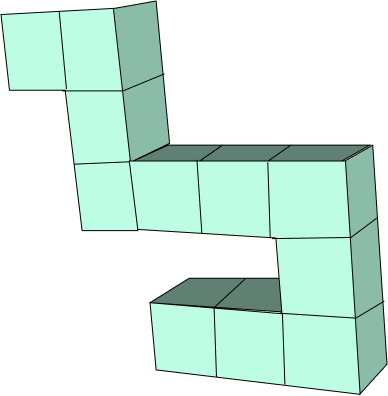
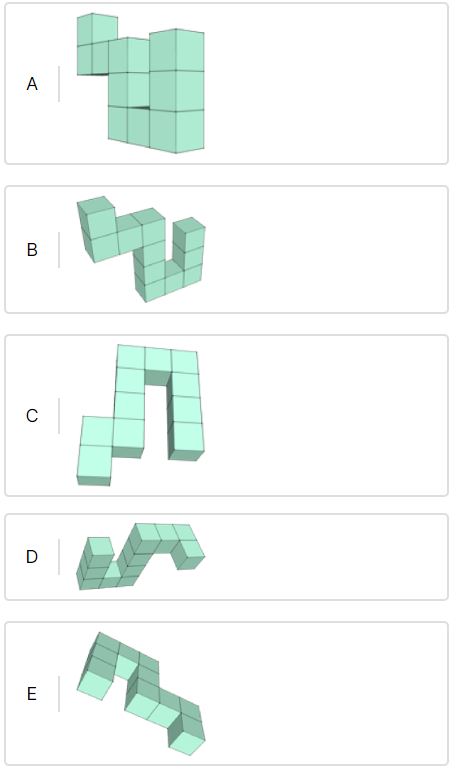
The correct answer is (B).
Note that answer option C is incorrect even though it is a mirror image of the original.
Rotated Blocks - In this Spatial Question test takers are required to determine which rotated shape resembles the original. Other preparations which include Spatial Reasoning practice tests: Psychometric, Engineering, and Mechanical.
Sample Question #6
Which of the four options represents the cube in its folded form?

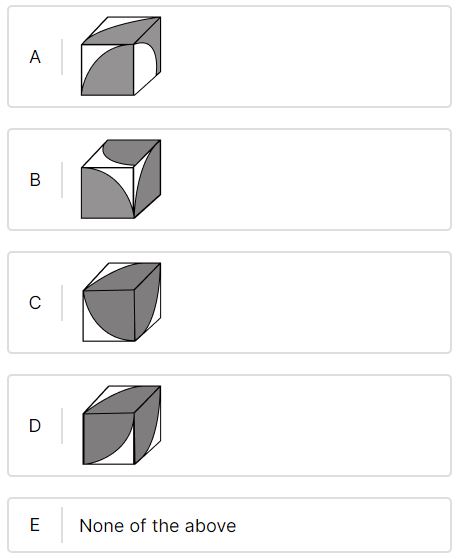
The correct answer is (C).
Option A – all facets of this cube have a quarter of a grey circle in them. The facet on the right in option 1 has a white circle part, and therefore this option can be ruled out.
Option B – the facet in the front has the upper right-hand part of a circle, and the facet on the right shows the upper left-hand side of a circle. This means that the top facet should either reveal the lower right part of a circle or the upper left part of a circle, yet it shows the lower left part of the circle and therefore, it is incorrect.
Option C – the facet at the front, the top facet and the facet on the right represent facets 1,5 and 6, respectively. This is the correct answer.
Option D – the facet at the front and the facet on the right both have the same circle parts. This means that we should find two facets in the central diagram, one after the other, that have the same circle parts – but there aren't, so this option is incorrect.
Option E - none of the above - is a distractor that's purpose is to cause some discomfort to the examinee. In some cases, it is true, but in most cases, it isn't. If you're confident with your chosen answer, mark it and continue with the test.
Sample Question #7
Which of the shadows on the right can result from casting light on one of the 3D-shape’s sides?…
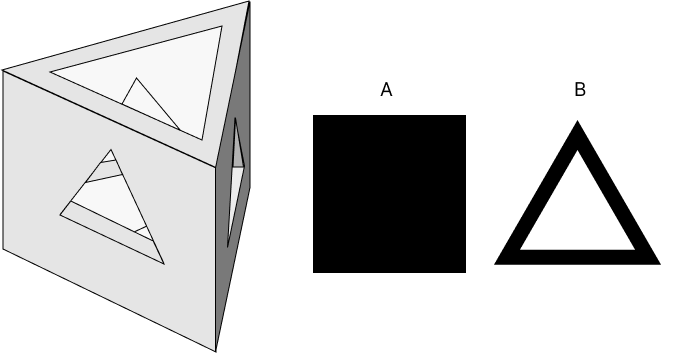
The correct answer is B.
When you look at the shape from above or below, you will see a shadow identical to image B.
When you look at the shape from the side, you will see a shadow in the form of a dark square with lit triangles in it (B.N. the lit triangle are not identical to the one shown in shape itself!).
Illustration of a side view:

A police officer or firefighter must be able to determine the most efficient path between two places. The candidate should also be able to visualise what something would look like after being moved or its parts switched around. Diagrams and floor plans are also presented, which may be a mirror image or another variation of an area. Improve your skills with more Spatial Reasoning questions or purchase the full Spatial Reasoning preparation.
Sample Question #8
Below are two separate objects, each has a dot placed in one corner, and each has five possible rotations. Choose the answer option in which the dots are placed in the same corners of the objects as in the model.
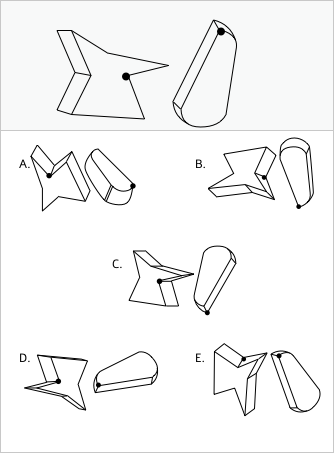
The correct answer is (D).
To solve this question, try to imagine each 3D figure and rotate it in your mind. Then, according to this rotation, try to deduce if the dot is in the same place as its first position. Here, we can see option (D) is the correct answer.
Notice that it is much easier to rotate the right object mentally. If one begins with eliminating all options in which the right object has the wrong vertex marked, the solution becomes much easier in general.
Sample Question #9
When put together properly, the top three puzzle pieces will create one of the following shapes (1-5).
Note that a side marked A has to touch A and so forth.
Choose the correct answer.
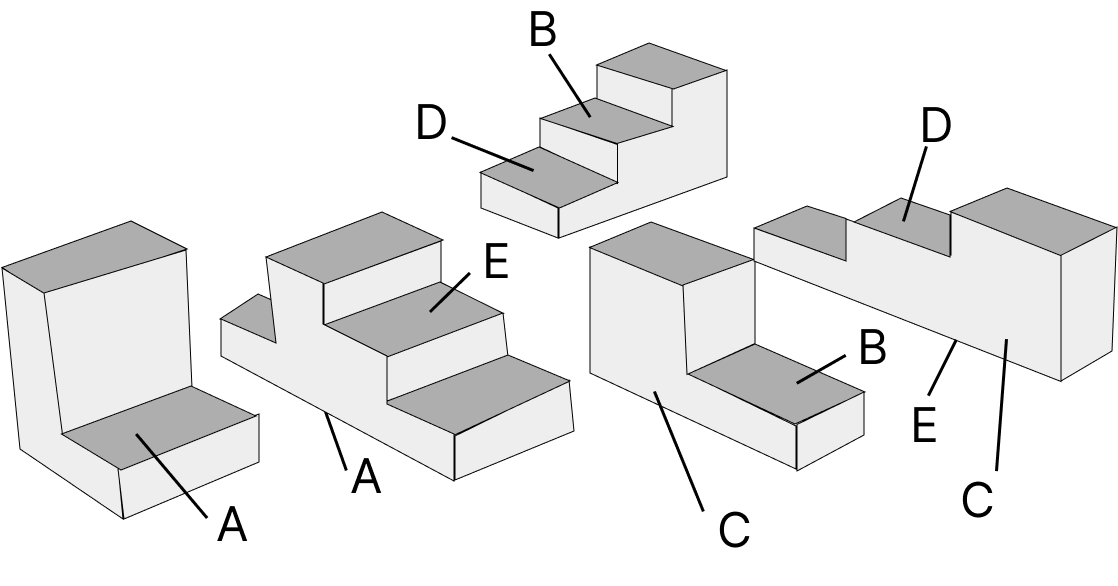

The correct answer is picture #2.
Look at the parts marked as B and imagine how they would look joined up. Of the five options, only picture 2 shows these two parts put together.
Therefore, picture 2 is the correct answer.
When designing or working on machines or buildings, engineers must be able to visualise the interactions between parts. It is essential that a mechanic understands the car's internal mechanisms since he or she relies on spatial perception to interpret the vehicle's visual features. You can find more information about Mechanical Reasoning Question types here. Other preparations which include Spatial Reasoning practice tests: Psychometric, Engineering, and Mechanical.
Sample Question #10
In which of the four options is this cube shown from a different perspective?
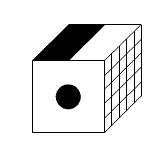
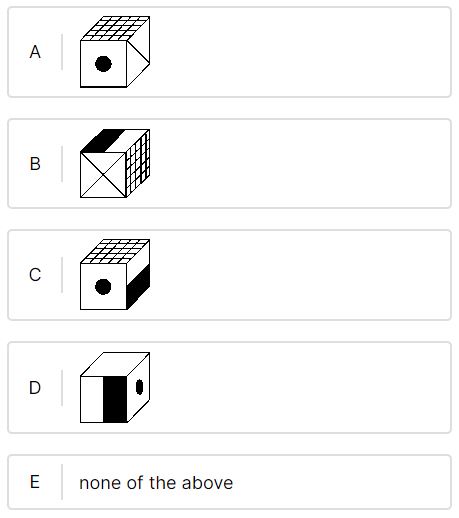
The correct answer is (A)
This cube exposes the facet at the bottom of the cube in the central diagram - a diagonal.
(B) can be eliminated because the cube hasn’t rotated, and the front facet has changed into an X instead of a black circle.
(C) can be eliminated because the half black and half white facet are supposed to appear on the left instead of on the right, concerning the other two visible facets.
(D) can be eliminated because the circle should be on the top facet concerning the half black/half white facet.
Option E - none of the above - is a distractor that's purpose is to cause some discomfort to the examinee. In some cases, it is true, but in most cases, it isn't. If you're confident with your chosen answer, mark it and continue with the test.
Answer Index
| 1 | 2 | 3 | 4 | 5 |
| B | C | A | A | B |
| 6 | 7 | 8 | 9 | 10 |
| C | B | D | B | A |
Continue Practicing for the Spatial Reasoning Exam
Access more Spatial Reasoning practice tests and other valuable Spatial Reasoning prep materials so that you take the test while being as prepared as possible:
- Non-Verbal Reasoning Tests - 12 full-length Spatial Reasoning practice test simulations and hundreds of extra practice exercises on Inductive, Abstract, and Diagrammatic Reasoning tests.
- Spatial Reasoning Practice - This preparation includes 20 Spatial Reasoning tests plus 250 additional questions and explanations.
- Psychometric Tests Preparation - 9 Spatial Reasoning practice tests along with a database of 16,000 questions on Verbal, Logical, Numerical, and Mechanical questions.
- All-Inclusive Mechanical Reasoning - 12 Spatial Reasoning, 21 Mechanical and Electrical, and 6 Ramsay Institute-style practice tests.
- Engineering Aptitude Tests Practice - 12 Spatial Reasoning tests as well as 2000 questions on Numerical, Abstract, Verbal, and Mechanical Reasoning.
Ace Your Job Search with a Custom Prep Kit
Job hunting doesn't have to be stressful.
Prepare smarter and ace your interviews faster with our Premium Membership.





